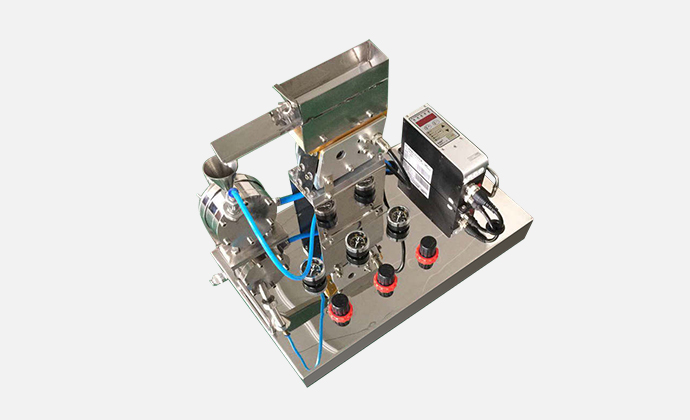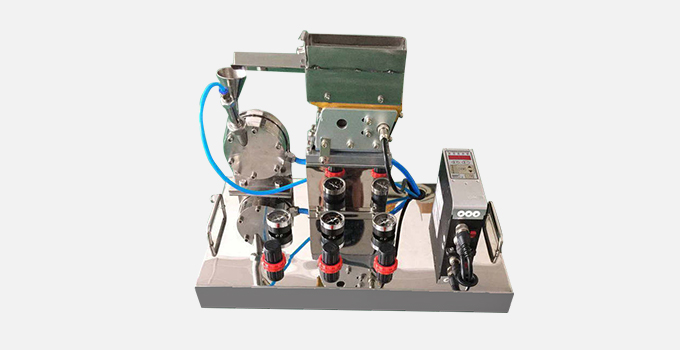
Is a kind of ultra-small bench-top machine, which is is suitable for superfine pulverization of ultra-small material with high value in laboratory. Mini air flow pulverizer has to be equipped with air compressor for working. It can be especially suitable for laboratories which need to change different materials frequently. This machine is often applied to pulverize various kinds of high hardness and brittle materials like zircon sand, zirconia, silica, alumina, calcium carbonate, carbon black, AC blowing agent, coating, fluorescent powder, plastics, pearl powder, various fillers for rubber, and etc.
| Items | Technical Parameters |
| Product Name | Mni Air Flow Pulverizer |
| Model No. | QL-1 |
| Power Supply | 380V-50Hz 3 Phase |
| Power Consumption | 5.5KW/hr |
| Feeding Pressure | 0.3~0.4MPa |
| Pulverizing Pressure | 0.6~0.7MPa |
| Air Flow Volume | 0.4M³/min |
| Capacity | 0.5-200g/hr |
| Feed Size | More than 100 meshes |
| Fineness of Output | Average particle size < 5 μm |
Powder material is sent to the feeding nozzle by the electromagnetic vibration feeder, and is injected into the pulverizing cavity by action of the feeding compressed air. The materials entering the pulverizing chamber and the high-speed air flow ejected by the pulverizing nozzle form a supersonic flow group, so that the materials collide and shear with each other in the pulverizing chamber and collide and rub with the wall of the pulverizing chamber, and finally achieve the purpose of pulverizing the materials into micron fine powder. In process of high-speed movement and material pulverizing, the particles with different fineness will produce different centrifugal forces in the rotating air flow. The powder particles with qualified fineness will be taken to the discharge pipe by exhaust flow because its centripetal air flow force is greater than centrifugal force, and then the finished powder will be collected by the cloth bag; The larger particles are thrown to the surroundings because its centrifugal force is greater than force of centripetal air flow, and are continuously crushed by continuous high-speed movement of the flow group.
